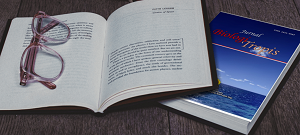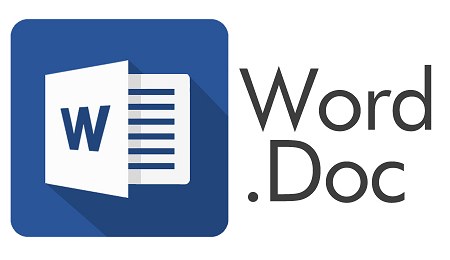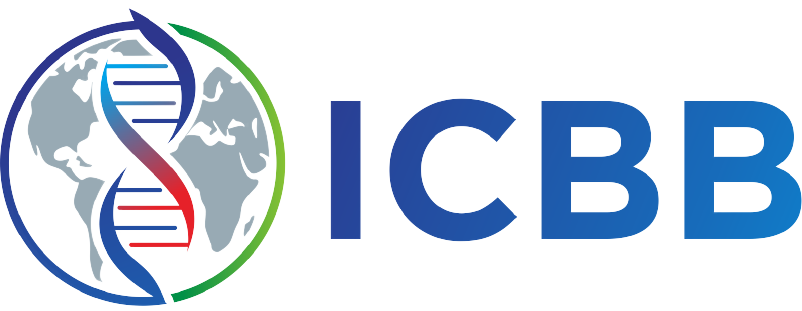Ecological Index and Distribution of Sponges (Porifera) in the Waters of Labuan Beropa Village, South Konawe
Authors
Putri Pebrina Sipayung , La Ode Alirman Afu , Rahmadani RahmadaniDOI:
10.29303/jbt.v25i3.9950Published:
2025-07-21Issue:
Vol. 25 No. 3 (2025): Juli-SeptemberKeywords:
Distribution, Ecological indices, Labuan Beropa, Porifera.Articles
Downloads
How to Cite
Downloads
Metrics
Abstract
Tropical coastal ecosystems possess high biodiversity and play a vital role in maintaining ecological functions, supported in part by the presence of sponges (Porifera) as filter feeders. This study aimed to identify species diversity, calculate ecological indices, and analyze the distribution patterns of sponges in the coastal waters of Labuan Beropa, South Konawe. Field surveys were conducted through sponge sampling at several observation sites, followed by taxonomic identification, calculation of Shannon-Wiener diversity index (H’), evenness (E), dominance (C), and distribution pattern analysis using the Morisita index. Seven benthic sponge species were recorded: Aaptos pernucleata, Aaptos suberitoides, Clathria (thalysias), Haliclona cymaeformis, Hyrtios erectus, Mycale sp., and Xestospongia muta. The highest density occurred in areas with stable rocky substrates, calm currents, and low anthropogenic disturbance, while the lowest density was observed in areas with intense human activities. H’ values were low (0.632–0.735), E values were high (0.748–0.869), and C values were low (<0.3). Distribution patterns were predominantly clumped, with some species exhibiting uniform or random patterns. These findings indicate that habitat physical quality and the degree of anthropogenic pressure are key determinants of sponge community structure. The baseline data generated can be used to support sustainable management and conservation of tropical coastal ecosystems.
References
Abbas, S., & Mahmoud, H. (2022). Identification of Sponge-Associated Bacteria From the Coast of Kuwait and Their Potential Biotechnological Applications. Frontiers in Microbiology, 13. https://doi.org/10.3389/fmicb.2022.896718
Alsaadi, A., Ganesen, S. S. K., Amelia, T. S. M., Moanis, R., Peeters, E., Vigneswari, S., & Bhubalan, K. (2022). Polyhydroxyalkanoate (PHA) Biopolymer Synthesis by Marine Bacteria of the Malaysian Coral Triangle Region and Mining for PHA Synthase Genes. Microorganisms, 10(10), 2057. https://doi.org/10.3390/microorganisms10102057
Baharudin, A., Tangke, U., & Titaheluw, S. S. (2022). Distribusi Parameter Oseanografi Dengan Hasil Tangkapan Ikan Pelagis Kecil Untuk Pemetaan Distribusi Daerah Potensial Penangkapan Di Perairan Teluk Weda. Jurnal Biosainstek, 4(1). https://doi.org/10.52046/biosainstek.v4i1.719
English S, Wilkinson C, Baker V. (1994). Survei Manual For Tropical Marine Resources. ASEAN-Australia Marine Science Project: Living Coastal Resources.
Evans, K. L., & Montagnes, D. J. S. (2019). Freshwater Sponge (Porifera: Spongillidae) Distribution Across a Landscape: Environmental Tolerances, Habitats, and Morphological Variation. Invertebrate Biology, 138(3). https://doi.org/10.1111/ivb.12258
Fidayat, F., Lestari, F., & Nugraha, A. H. (2021). Keanekaragaman Spons pada Ekosistem Padang Lamun di Perairan Malang Rapat, Kabupaten Bintan. Jurnal Akuatiklestari, 4(2), 71–83. https://doi.org/10.31629/akuatiklestari.v4i2.2469
Folkers, M., & Rombouts, T. (2019). Sponges Revealed: A Synthesis of Their Overlooked Ecological Functions Within Aquatic Ecosystems. 181–193. https://doi.org/10.1007/978-3-030-20389-4_9
Francis, P., & Chakraborty, K. (2022). Undescribed Anti‐Inflammatory Thalysiaketides From Marine Sponge Clathria (Thalysias) vulpina (Lamarck, 1814). Chemistry & Biodiversity, 19(3). https://doi.org/10.1002/cbdv.202100838
Gan, B. C., Wang, K., Zhang, B., Jia, C., Lin, X., Zhao, J., & Ding, S. (2024). Dynamic Microbiome Diversity Shaping the Adaptation of Sponge Holobionts in Coastal Waters. Microbiology Spectrum, 12(11). https://doi.org/10.1128/spectrum.01448-24
García, P. A., Martín, E. V, Dı́ez, D., & Castro, M. Á. (2018). Marine Alkylpurines: A Promising Group of Bioactive Marine Natural Products. Marine Drugs, 16(1), 6. https://doi.org/10.3390/md16010006
González‐Aravena, M., Kenny, N. J., Osorio, M., Font, A., Riesgo, A., & Cárdenas, C. A. (2019). Warm Temperatures, Cool Sponges: The Effect of Increased Temperatures on the Antarctic SpongeIsodictyasp. Peerj, 7, e8088. https://doi.org/10.7717/peerj.8088
Hadi, T. A. (2018). Peranan Ekologis Spons Pada Ekosistem Terumbu Karang. Oseana. https://doi.org/10.14203/oseana.2018.vol.43no.1.15
Hawkes, N., Korabik, M., Beazley, L., Rapp, H. T., Xavier, J. R., & Kenchington, E. (2019). Glass Sponge Grounds on the Scotian Shelf and Their Associated Biodiversity. Marine Ecology Progress Series, 614, 91–109. https://doi.org/10.3354/meps12903
Kahn, A., Chu, J. W. F., & Leys, S. P. (2018). Trophic Ecology of Glass Sponge Reefs in the Strait of Georgia, British Columbia. Scientific Reports, 8(1). https://doi.org/10.1038/s41598-017-19107-x
Kang, H. K., Choi, M., Seo, C., & Park, Y. (2018). Therapeutic Properties and Biological Benefits of Marine-Derived Anticancer Peptides. International Journal of Molecular Sciences, 19(3), 919. https://doi.org/10.3390/ijms19030919
Kepel, T. L., Mbay, L. O. N., Nugraha, R., Jayawiguna, M. H., Sudirman, N., & Mangindaan, P. (2021). Tekanan Ekologi Dan Nilai Moneter Karbon Biru Ekosistem Mangrove Muara Gembong, Teluk Jakarta. Jurnal Kelautan Nasional, 16(2), 135. https://doi.org/10.15578/jkn.v16i2.9917
Krebs, C. J. (2014). Ecology Ecology: The Experimental Analysis of Distribution and Abundance. In BioScience (Sixth Edit, Vol. 23, Issue 4). Pearson Educat ion Limited. https://doi.org/10.2307/1296598
Li, M., Wang, K., Jia, C., Liu, T., Yang, S., Ou, H., & Zhao, J. (2021). Bacteroidetes Bacteria, Important Players in the Marine Sponge Larval Development Process. Iscience, 24(6), 102662. https://doi.org/10.1016/j.isci.2021.102662
Marzuki, I. (2018). Skrining Spons Potensial Sebagai Biodegradator Hidrokarbon Berdasarkan Data Morfologi. https://doi.org/10.31219/osf.io/m5dws
Marzuki, I., Asaf, R., Paena, M., Athirah, A., Nisaa, K., Ahmad, R., & Kamaruddin, M. (2021). Anthracene and Pyrene Biodegradation Performance of Marine Sponge Symbiont Bacteria Consortium. Molecules, 26(22), 6851. https://doi.org/10.3390/molecules26226851
Marzuki, I., Septiningsih, E., Kaseng, E. S., Herlinah, H., Sahrijanna, A., Sahabuddin, S., Asaf, R., Athirah, A., Isnawan, B. H., Samidjo, G. S., Rumagia, F., Hamidah, E., Santi, I. S., & Nisaa, K. (2022). Investigation of Global Trends of Pollutants in Marine Ecosystems Around Barrang Caddi Island, Spermonde Archipelago Cluster: An Ecological Approach. Toxics, 10(6), 301. https://doi.org/10.3390/toxics10060301
Mircheska, S. T. (2025). Some of the Many Roles That Sponges Play in Marine Ecosystems  https://doi.org/10.5194/egusphere-egu25-9372
Muricy, G., Lage, A., SANDES, J., Klautau, M., Pinheiro, U., Laport, M. S., Oliveira, B. F. R. de, Pequeno, C. B., & Lopes, M. V. (2024). Sponge Communities of Submarine Caves and Tunnels on the Fernando De Noronha Archipelago, Northeast Brazil. Journal of Marine Science and Engineering, 12(4), 657. https://doi.org/10.3390/jmse12040657
Musak, P., Sumilat, D. A., Schaduw, J. N. W., Rumengan, A. P., Angkouw, E. D., & Undap, S. L. (2023). Keanekaragaman Spons Di Kawasan Pantai Kinamang Kecamatan Malalayang Kota Manado. Jurnal Pesisir Dan Laut Tropis, 11(1), 102–111. https://doi.org/10.35800/jplt.11.1.2023.53334
Nasrawati, . I., & Asmadin, A. (2020). Kepadatan Spons Pada Ekosistem Lamun Kaitannya Dengan Parameter Oseanografi Di Perairan Desa Kaswari Kabupaten Wakatobi. Jurnal Sapa Laut (Jurnal Ilmu Kelautan), 5(4), 357. https://doi.org/10.33772/jsl.v5i4.15499
Nava, H., García-Madrigal, C. A. E., & Carballo, J. L. (2018). Relationships Between Boring Sponge Assemblages and the Availability of Dead Coral Substrate on Mexican Pacific Coral Reefs. Journal of the Marine Biological Association of the United Kingdom, 99(4), 795–805. https://doi.org/10.1017/s0025315418000899
Ngurah, A., Kristyawan, I. P. A., & Bagus, S. D. I. G. (2024). Pertumbuhan Crustose Coralline Algae (CCA) Pada Substrat Keramik Dengan Komposisi Dan Jenis Material Penyusun Yang Berbeda. Jurnal Teknologi Lingkungan, 25(1), 80–87. https://doi.org/10.55981/jtl.2024.2009
Ode, M. F., Ramli, M. D. C., & Sahidin, S. (2019). Kajian Bioaktivitas Antibakteri dan Senyawa Metabolit Sekunder Spons Laut Haliclona Sp., dari Perairan Tanjung Tiram Moramo Utara, Sulawesi Tenggara. Jurnal Sapa Laut (Jurnal Ilmu Kelautan), 4(1), 13. https://doi.org/10.33772/jsl.v4i1.6803
Odum, E. P. (1971). Fundamentals of Ecology Third Edition. In W. B. Saunders Company (p. 593).
Onsri, N., Sivaipram, I., Boonsanit, P., Sagulsawasdipan, K., & Saramul, S. (2024). Larval Dispersal Modelling of the Blue Swimming Crab Portunus Pelagicus (Linnaeus, 1758) From the Crab Banks Along the Coast of Trang Province, Southern Thailand. Water, 16(2), 349. https://doi.org/10.3390/w16020349
Ousterhout, B. H., Serrano, M., Bried, J. T., & Siepielski, A. M. (2019). A Framework for Linking Competitor Ecological Differences to Coexistence. Journal of Animal Ecology, 88(10), 1534–1548. https://doi.org/10.1111/1365-2656.13048
Putra, S. A., Ambo‐Rappe, R., Jompa, J., & Voogd, N. J. d. (2024). Preliminary Study of Marine Sponges (Porifera) in the Littoral of Spermonde Archipelago, Indonesia. Zookeys, 1208, 275–313. https://doi.org/10.3897/zookeys.1208.113603
Rusianti, C. R., Saleh, F. I. E., Talakua, S., Mangando, S., Demena, Y. E., Manalu, E., Eldiester, F. C., Rumbino, F. N. Y., Alianto, A., & Raharjo, S. (2022). Struktur Komunitas Bivalvia Di Padang Lamun Pulau Meosmangguandi, Kepulauan Padaido, Biak Numfor. Igya Ser Hanjop Jurnal Pembangunan Berkelanjutan, 4(1), 11–19. https://doi.org/10.47039/ish.4.2022.11-19
Sayori, N., Tururaja, T. S., & Kolibongso, D. (2022). Komunitas Spons (Porifera) Pada Ekosistem Terumbu Karang Di Manokwari, Indonesia. Jurnal Kelautan Tropis. https://doi.org/10.14710/jkt.v25i3.14098
Setiadewi, N., Henny, C., Rohaningsih, D., Waluyo, A., & Soewondo, P. (2023). Kelimpahan Mikroplastik Pada Air Limbah Domestik Dan Penyisihannya Di IPAL Bojongsoang, Kota Bandung. Jurnal Ilmu Lingkungan, 22(2), 401–407. https://doi.org/10.14710/jil.22.2.401-407
Setyaningsih, W. A., Bengen, D. G., Madduppa, H., Ismet, M. S., Taqiyuddin, M. W., & Salsabila, A. (2024). Komposisi Jenis Dan Kepadatan Spons (Porifera: Demospongiae) Di Pulau Panggang, Kepulauan Seribu, Dki Jakarta. Jurnal Ilmu Dan Teknologi Kelautan Tropis, 16(2), 239–252. https://doi.org/10.29244/jitkt.v16i2.56300
Setyanto, A. (2020). Komposisi Spesies Larva Lobster Yang Terkumpul Pada Atraktor Lampu Bawah Ai. JFMR-Journal of Fisheries and Marine Research, 4(2), 281–288. https://doi.org/10.21776/ub.jfmr.2020.004.02.12
Shiau, J., Lee, M.-Y., Tang, J., Huang, H., Lin, Z., Su, J., Hou, M., Cheng, Y., & Chang, H. (2022). Marine Sponge Aaptos Suberitoides Extract Improves Antiproliferation and Apoptosis of Breast Cancer Cells Without Cytotoxicity to Normal Cells in Vitro. Pharmaceuticals, 15(12), 1575. https://doi.org/10.3390/ph15121575
Siska, S., Puspita, L., & Sari, N. P. (2018). Struktur Komunitas Porifera (Spons) Di Perairan Pulau Layang Dan Pulau Cukus Kelurahansekanakraya Kota Batam Kepulauan Riau. Simbiosa, 7(2), 109. https://doi.org/10.33373/sim-bio.v7i2.1503
Sofiyani, R. G., Muskananfola, M. R., & Sulardiono, B. (2021). Struktur Komunitas Makrozoobentos Di Perairan Pesisir Kelurahan Mangunharjo Sebagai Bioindikator Kualitas Perairan. Life Science, 10(2), 150161. https://doi.org/10.15294/lifesci.v10i2.54446
Varijakzhan, D., Loh, J., Yap, W.-S., Yusoff, K., Seboussi, R., Lim, S. E., Lai, K., & Chong, C. M. (2021). Bioactive Compounds From Marine Sponges: Fundamentals and Applications. Marine Drugs, 19(5), 246. https://doi.org/10.3390/md19050246
Windt, N. v. d., Ent, E. v. d., Ambo‐Rappe, R., & Voogd, N. J. d. (2020). Presence and Genetic Identity of Symbiodiniaceae in the Bioeroding Sponge Genera Cliona and Spheciospongia (Clionaidae) in the Spermonde Archipelago (SW Sulawesi), Indonesia. Frontiers in Ecology and Evolution, 8. https://doi.org/10.3389/fevo.2020.595452
License
Copyright (c) 2025 Putri Pebrina Sipayung, La Ode Alirman Afu, Rahmadani Rahmadani

This work is licensed under a Creative Commons Attribution 4.0 International License.

Jurnal Biologi Tropis is licensed under a Creative Commons Attribution 4.0 International License.
The copyright of the received article shall be assigned to the author as the owner of the paper. The intended copyright includes the right to publish the article in various forms (including reprints). The journal maintains the publishing rights to the published articles.
Authors are permitted to disseminate published articles by sharing the link/DOI of the article at the journal. Authors are allowed to use their articles for any legal purposes deemed necessary without written permission from the journal with an acknowledgment of initial publication to this journal.


























